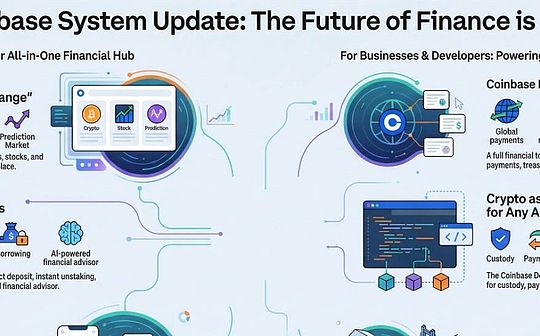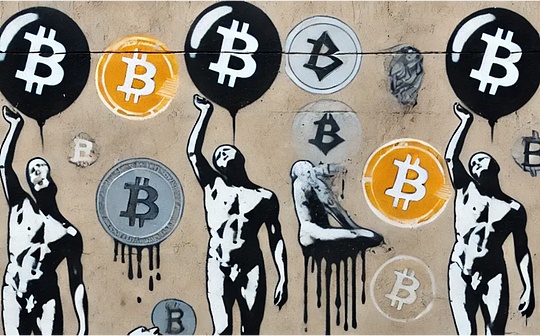
Author: Robert Greenfield IV Source: Medium Translation: Shan Oba, Bitchain Vision Realm
Solding pressure is the dark enemy of all asset holders.
Although venture capital funds and dishonest Kols are usually leading in this regard, supply impact inventory, miners and more and more institutional investors have now become the leading force of fear, uncertainty and doubt (FUD) to control the numberThe net traffic of one billion US dollars.
However, the local selling pressure is the function of the tokenomics of each network and protocol -this mechanism is encoded in the function of every destruction, casting and annualized income distribution to inspire the stakeholdersAt the same time, avoid economic expansion and prevent system native token prices from falling.
In this briefing, we will analyze local selling pressures embedded in Bitcoin, Ethereum and Solana economies.Well, let’s talk less nonsense, let’s start.
Bitcoin
The upper limit of the Bitcoin is 21 million, and the pre -set distribution plan is adopted.Each of a new block (average every 10 minutes) is generated, and the mining union gets new block rewards, which will increase the supply of tokens.For each 21,000 blocks (about four years), this fixed block reward will be reduced by half. This incident is called “halved”.Bitcoin’s block reward in 2009 was ₿50.
The upper limit of zero block rewards and fixed supply will not be achieved until 2140, but as half a time is reduced, the inflation rate will continue to decline and block rewards will be halved.However, Before the supply limit reaches, Bitcoin is still an inflationary asset.Based on the current block rewards, we will cast ₿164,000 (about 10.3 billion US dollars) each year.
At present, the main local selling pressure of Bitcoin comes from the following aspects:
-
Miners’ income (from transaction expenses and block rewards)
-
Market impact supply (creditors payments, government confiscation)
Miners selling pressure
Due to the high operating costs and competitiveness of Bitcoin mining, and the need to report the quarterly income and maintain the stock price of listed mining companies, miners are usually forced to sell Bitcoin they have dug to achieve profits.This has continued to sell pressure on Bitcoin.The high cost of mining, including financing and continuous operating expenses (such as electricity costs, taxes, and personnel costs), forcing miners to sell some bitcoin on a regular basis.The most important thing is that even if the block award is reduced, the total mining capacity (that is, the hash rate) of Bitcoin has been increasing in history, which further reduces the profitability of each unit’s hash capability.
>
Since Bitcoin in April 2024 halved, the average of $ 218 million per week, while the mining income (that is, potential selling pressure), and before halved in April 2024, this number reached 489 million US dollars.However, during the same period, the growth rate of hash has stagnated, indicating that the profit margin of miners has been significantly compressed.
Under the current Bitcoin price and hardware costs, the expansion of mining capabilities seems to be no longer favorable.Profit compression means that miners may need to sell larger Bitcoin to pay operating costs. These costs are mainly denominated in fiat currency.
Market impact X supply
In the field of cryptocurrencies, “market impact supply” refers to a large number of cryptocurrencies in the market due to accidents.The surge in supply usually significantly changes market dynamics, usually leading to a sharp decline in the price of the cryptocurrency.Such events may be triggered by the following factors:
-
Large -scale selling: When a large holder (such as a whale or institution) decides to liquidate a large number of positions.
-
Token unlock: When a large number of tokens that have been locked or granted before entering the circulation market, the amount of circulation is increased.
-
Regulatory changes or hackers attack: Regulatory suppression, exchanges are attacked by hackers or other emergencies may cause panic selling and rapid liquidation of assets.
With the rapid increase of this supply, if there is no corresponding demand growth, it will bring “impact” to the market, shake prices, and may lead to wider market volatility.
For Bitcoin, the market impact supply usually comes from the collapse of the Bitcoin liquidity platform (such as exchanges, market business and lending platforms).Unlike other cryptocurrencies, Bitcoin has no tokens unlocking plan or smart contracts can be used on its network.
Credit payment (temporary risk)
In the 2024 Bitcoin’s half -haller cycle, market impact supply is currently limited by $ 10 billion (168,000 BTC) involved in the MT. GOX and Genesis bankruptcy cases.The market is concerned that these creditors may choose to sell the Bitcoin they hold after receiving the full compensation, which will cause market turmoil, especially if the economic recession is triggered by the recent economic recession.
The government confiscates and sells
Bitcoin, which the government confiscated from illegal websites (usually dark web), has also increased market impact supply.
For example, in February 2024, the German authorities confiscated 50,000 Bitcoin from the former operator of pirated website Movie2k.to, worth about $ 2.1 billion.These cryptocurrencies were voluntarily handed in the case of the suspect in the case on an investigation of illegal business exploitation of copyright and money laundering.This confiscation is part of the Dresden Prosecutor’s Office, Saxon Criminal Police and other institutions.
>
>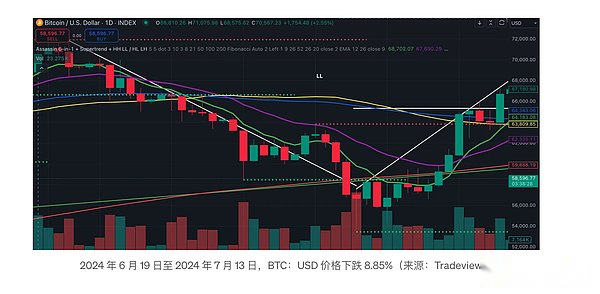
After confiscating Bitcoin, the Saxon government sold it to the market, resulting in Bitcoin against the US dollar (BTC
) The price fell 16.89%.However, on the last day of selling, the price rebounded, and the decline eventually narrowed to 8.85%.
Bitcoin held by the government
Market impact supply is not limited to Saxony in Germany.As of 2024, multiple governments around the world hold a large number of bitcoins, mainly obtained through confiscation -related behaviors related to criminal activities:
-
USA: The U.S. government is the world’s largest Bitcoin holder, holding about 203,129 BTCs, worth about $ 11.98 billion.These Bitcoin are mainly obtained through the confiscation of cases such as the “Silk Road” dark web market.
-
China: China holds about 190,000 Bitcoin with a value of about 11.02 billion US dollars.Most of these Bitcoin come from Plustoken Ponzi scams, which are one of the largest cryptocurrency frauds in history.
-
U.K.: Britain holds about 61,000 Bitcoin, worth about 3.53 billion US dollars.These Bitcoin confiscated from various financial crimes, including major money laundering operations.
-
Salvador: As the first country to use Bitcoin as a legal currency, Salvador holds about 5,800 bitcoin with a value of about $ 400 million.These warehouses are part of the national financial strategy, including the “buy 1 bitcoin every day” plan.
-
Ukraine: Ukraine holds about 46,351 Bitcoin, including both the assets confiscated by the police and the donations received during the war.
Bitcoin ETF capital outflow (theoretical)
A new Bitcoin price correlation was introduced in 2024: Bitcoin ETF net flow.With the gradual income of cryptocurrencies, the global investment macro trend will increasingly determine its price with the performance of the asset’s token economics and its network/protocol.
Ethereum
Ethereum was originally a network that adopted a workingload certificate (POW), and later turned to the equity certificate (POS) to better improve the transaction throughput and reduce the demand for hardware. These hardware demand has led to a centralized trend of the network.
Ethereum isDual inflationIn the use of the following three dynamic supply mechanisms to guide its token economics:
-
issued: Ethereum is issued according to the total pledge value.Specifically, the total distribution volume is proportional to the square root of the number of verifications.
-
Trading fee burning: Ethereum will burn a part of ETH for paying transaction costs from circulation supply.
As of writing this article, Ethereum has about 1.66m authentication, and the total circulation of 23,300 ETHs per week, resulting in an annual inflation rate of 0.295%.The pledged ETH is 2.8%as an authentication or an annualized yield (APY) obtained by liquidity.
>
Ethereum’s Base_reward_factor controls network inflation.With the rise of the L2 Rollup usage rate, the transaction density and destruction rate of Ethereum have been steadily declining since 2021, leading to an increase in inflation rate.
>
>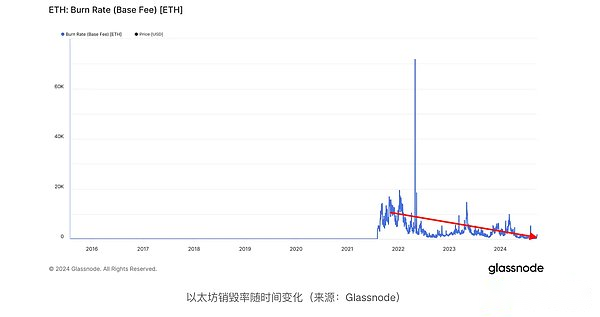
If the transaction density continues to decline, because the user chooses a lower L2 transaction fee, unless the Base_reward_factor factor is increased, the verifier’s profitability and total ETH pledge will inevitably decrease.However, doing so will also increase inflation.Ethereum may need to pay attention to better extended transaction costs on L1, or redefine the relationship between summary and basic layers to increase the number of pledged ETH ratios and/or the number of ETH destroyed.
Another factors that affect the supply and demand dynamics of Ethereum are pledge, although it is indirect.About 29% of ETH’s total supply is pledged and continued to grow.The pledge is a large source of net supply in Ethereum, and has been widely popularized and simplified through liquidity pledge protocols such as lido and RocketPool. These protocols allow usersA certain proportion of verifications reward.
Solana
Solana was a POS network from the beginning, and there was a fixed total inflation plan, which would not change according to the number of verificationrs.At present, SOLANA’s inflation rate is 5.1%, and it will continue to decrease by 15%per year until the end inflation rate of 1.5%in about 2031.
>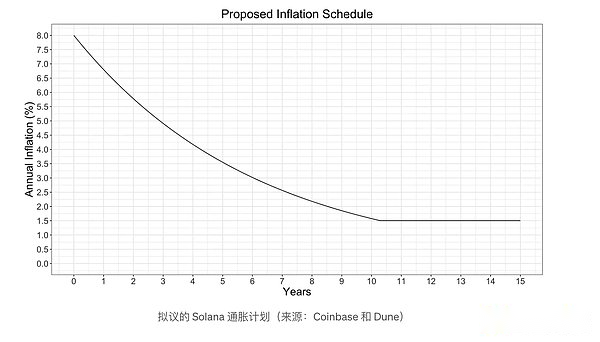
Solana destroyed 50% of basic costs and priority costs, and Ethereum destroyed 100% of basic costs.However, the destruction rate of Solana is much lower, which only offsets 6%of the issuance from the beginning of the year (destroyed 1.1 million SOL, and the release of 18.2 million SOL).Most of Solana’s inflation comes from its fixed distribution plan, an increase of 528K SOL ($ 84 million) per week -$ 46 million higher than ETH, but less than $ 198 million in BTC.
Solana’s pledge rate has remained stable. Since September 2021, it has remained above 60%, reaching a peak value of 72%in October 2023, and stabilizing at 68%by March 2024.Compared with ETH, a higher pledge rate means that more pledge rewards may be sold.
in conclusion
Token inflation will have different effects on the flow of flow according to factors such as issuance costs (mining and pledge) and variability (destruction rate).Bitcoin and other POW chains are facing higher selling pressures from miners to make up for costs, and POS pledges can retain more benefits.The inflation rate of POS also depends on the changes in the pledge rate.To fully understand the traffic of the issuance driver, these two indicators need to be considered.For example, although pledge has served as ETH’s liquidity absorbers, it is not the case for SOL.


